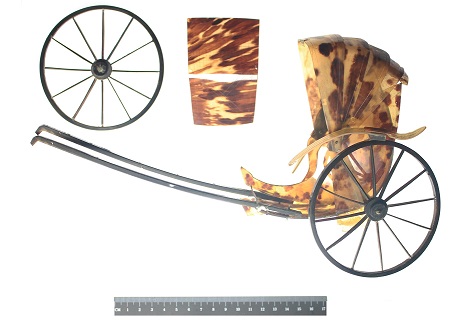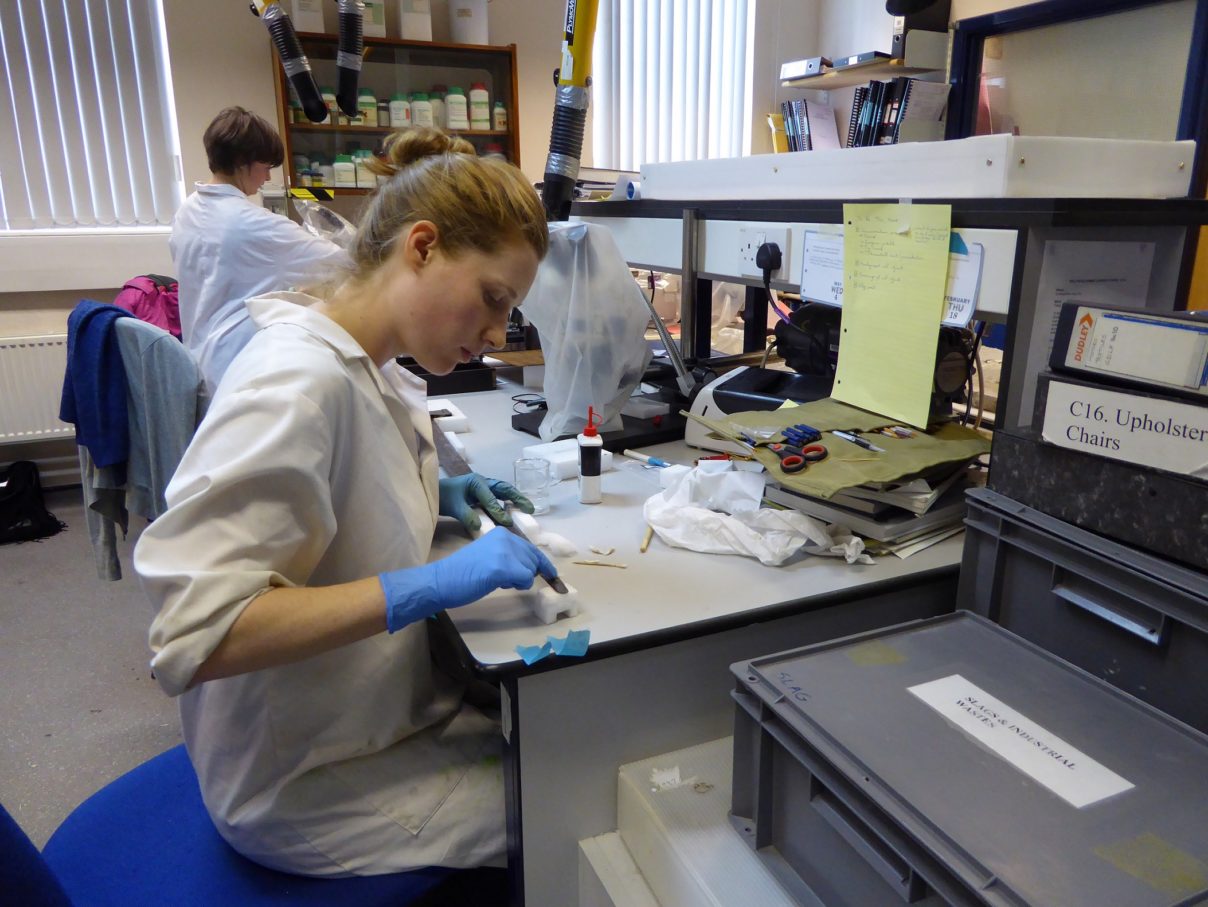Musings of a Conservator – Student Post

It was Christmas in the Conservation Lab in Durham; somewhat unseasonal for mid-June, but a welcome occasion for all us students as it marks the beginning of the final term of our first year. Objects from various museums and institutions were brought into the lab and after an initial assessment, we were assigned four different items that require conservation.
I had specifically asked for one thing that had caught my eye, a somewhat woe begotten stuffed pull-along horse that urgently required some interventive repair work. Even from afar I could see that as the skin had dried it had shrunk, exposing the sawdust stuffing and creating ugly scars that spiralled up the legs and split the back. Missing one eye, and somewhat haphazardly attached to a wooden base, it looked a little like a character from the shop of broken toys. Restraining the urge to name the toy upon being granted custodianship, I suddenly realised the immensity of what I was going to be doing this summer. It’s a somewhat terrifying and hugely exciting prospect to be presented with objects that you are ultimately responsible for. The decisions that we make will directly impact upon the biography of the items and the horse spoke vividly about the amount of love lavished upon it in the past.

These few, short months not only allow us to gradually establish the kind of conservators that we want to be, but they also introduce the pressures and importance of working for clients and juggling numerous objects that all have to be completed by a certain deadline. Being a student places a high premium on research and a consideration of the ethical consequences to your actions; the real world of work doesn’t often allow you the luxury of endless debate and comparative treatment analysis. Are my worries about microscopic scratches on a metal surface justified, when realistically if I don’t use a more aggressive treatment then I will not have the time to finish the object? Should I dismiss a particular treatment because the effects may potentially cause damage to other nearby materials, even if the exposure is incredibly limited?

I find myself dwelling on achieving the right balance more often than I thought I would. Visits to museums and galleries as a child bequeathed a desire to ensure my work helps to preserve an object for future generations. However, I also recognise that our summer objects are also ‘sacrificial’ objects. Whilst our professors have faith that our abilities can now accommodate the complicated needs of frequently maddening objects, there is also encouragement to experiment with new techniques or treatments that we have never encountered before. I may feel more inclined towards a ‘minimum intervention’ form of conservation, but none of my proposals reflect this. I am greedy for the knowledge and the exhilaration that learning a new skill brings, especially when I am aware I may never encounter such freedom again.
I have been incredibly fortunate to have been given (alongside my horse) two pairs of objects; two lacquer stem-cups and two cellulose nitrate models. Having a side along comparison means that I can attempt two different types of treatment and that the client can be informed of the longer term stability of a particular course of action. This in turn can direct any future conservation required. Neither the intricately carved stem-cups nor the materially unstable models present obvious courses of action and I return as ever, to intensive deliberations whereby I attempt to puzzle my way through to an acceptable conclusion. In this last respect I am fortunate that my fellow students provide welcome voices of clarity through the internal debate I subject myself to. Irrespective of anything else I learn this summer, I will take away the importance of listening to others and seeking informed opinions.
Jenny.
